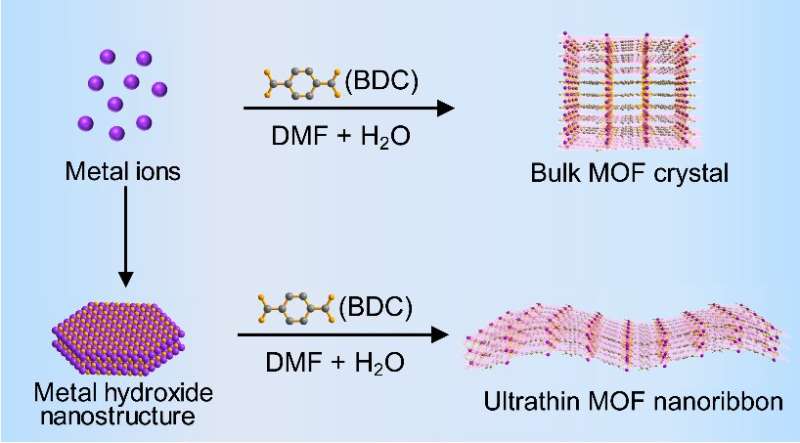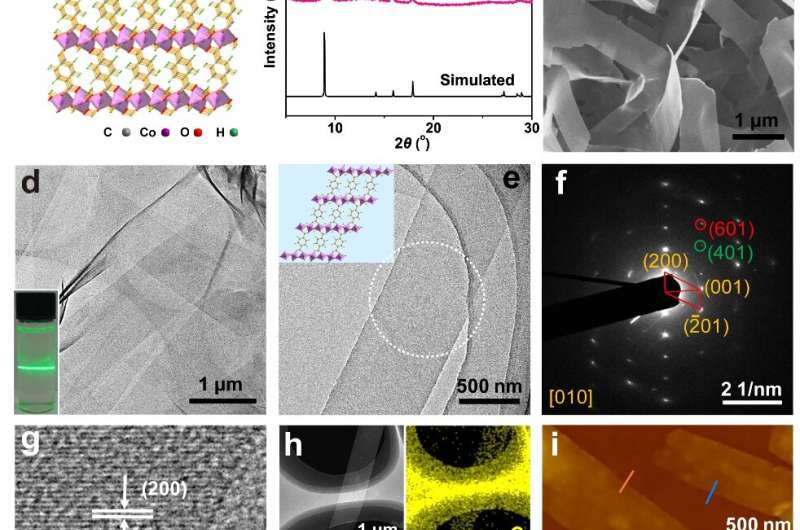Metal-organic framework nanoribbons

The nanostructure of metal-organic frameworks (MOFs) plays an important role in various applications since different nanostructures usually exhibit different properties and functions. In this work, the authors reported the preparation of ultrathin MOF nanoribbons by using metal hydroxide nanostructures as the precursors. Importantly, this general method can be used to synthesize various kinds of ultrathin MOF nanoribbons. The as-prepared ultrathin nanoribbons have been used for DNA detection, exhibiting excellent sensitivity and selectivity.
Metal-organic frameworks (MOFs) have attracted great attentions in the past decades due to their many noticeable features, such as large surface areas, highly ordered pores, tunable structures and unique functions, making them promising for many applications. The structure engineering of MOFs at the nanometer scale is essential to customize MOFs for specific applications.
Among various nanostructures, ultrathin nanoribbons (NRBs) show great potentials in both fundamental studies and technological applications. Their unique features like high surface-to-volume ratio, highly active surface, and high concentration of selectively exposed crystal facets enable them to exhibit unique electronic structures, mechanical properties, and excellent catalytic efficiency. However, so far, the preparation of ultrathin MOF NRBs still remains a great challenge due to the complicated nucleation and growth processes of MOFs.
In a new research article published in the National Science Review, the scientists at Nanyang Technological University, City University of Hong Kong and Beijing University of Chemical Technology present a general method to prepare ultrathin MOF NRBs by using the metal hydroxide nanostructures as precursors. They found that metal hydroxide nanostructures used as precursors can regulate the growth of MOF crystals by controlled release of metal ions from the metal hydroxides, which plays a key role in the synthesis of MOF NRBs. Importantly, the proposed method is simple, efficient and versatile, which could be used for the preparation of a series of ultrathin MOF NRBs. As a proof-of-concept application, the as-prepared ultrathin NRBs were used in DNA detection, exhibiting excellent sensitivity and selectivity.

More information: Bingqing Wang et al, Ultrathin Metal-Organic Framework Nanoribbons, National Science Review (2019). DOI: 10.1093/nsr/nwz118
Provided by Science China Press





















